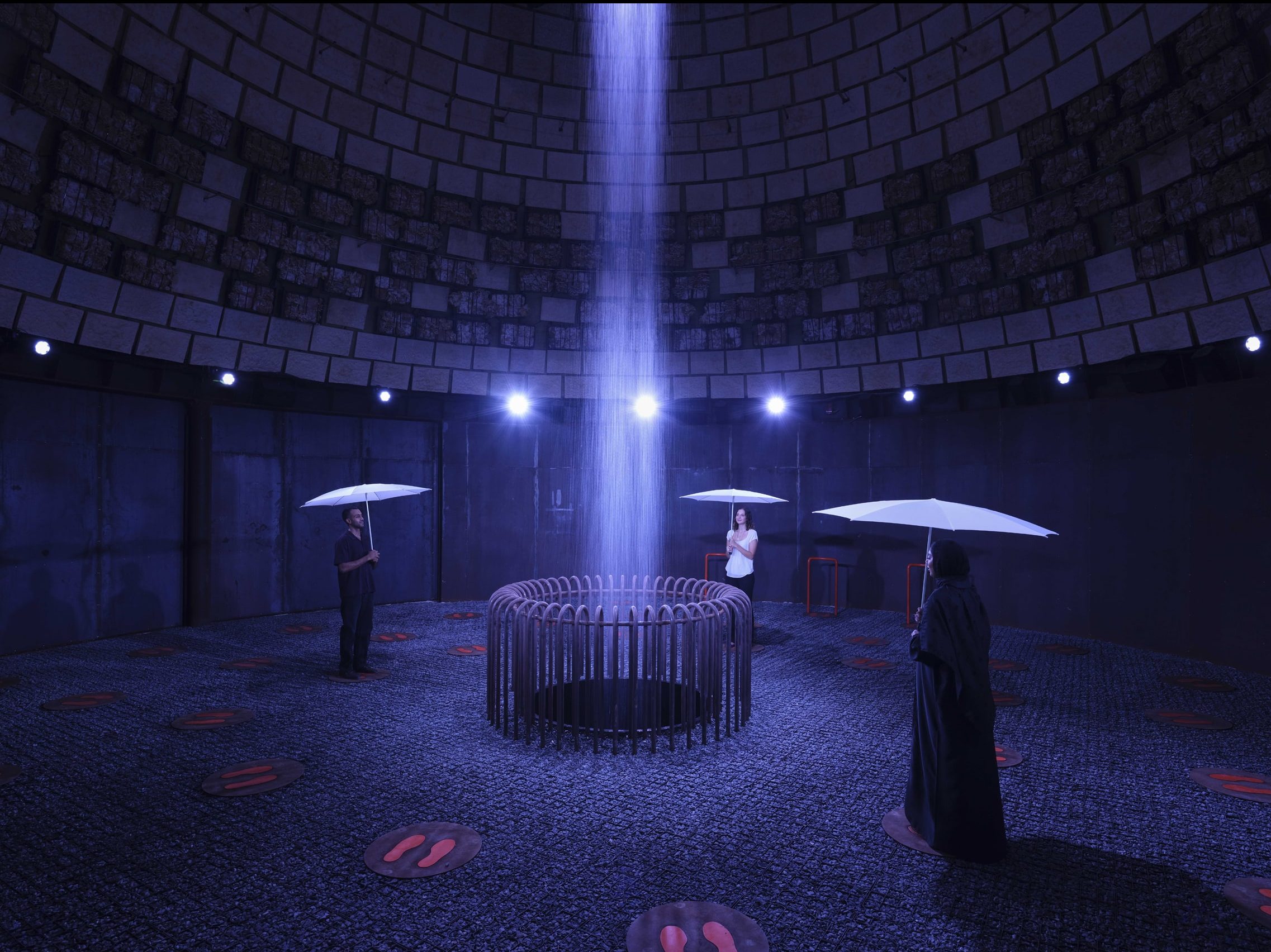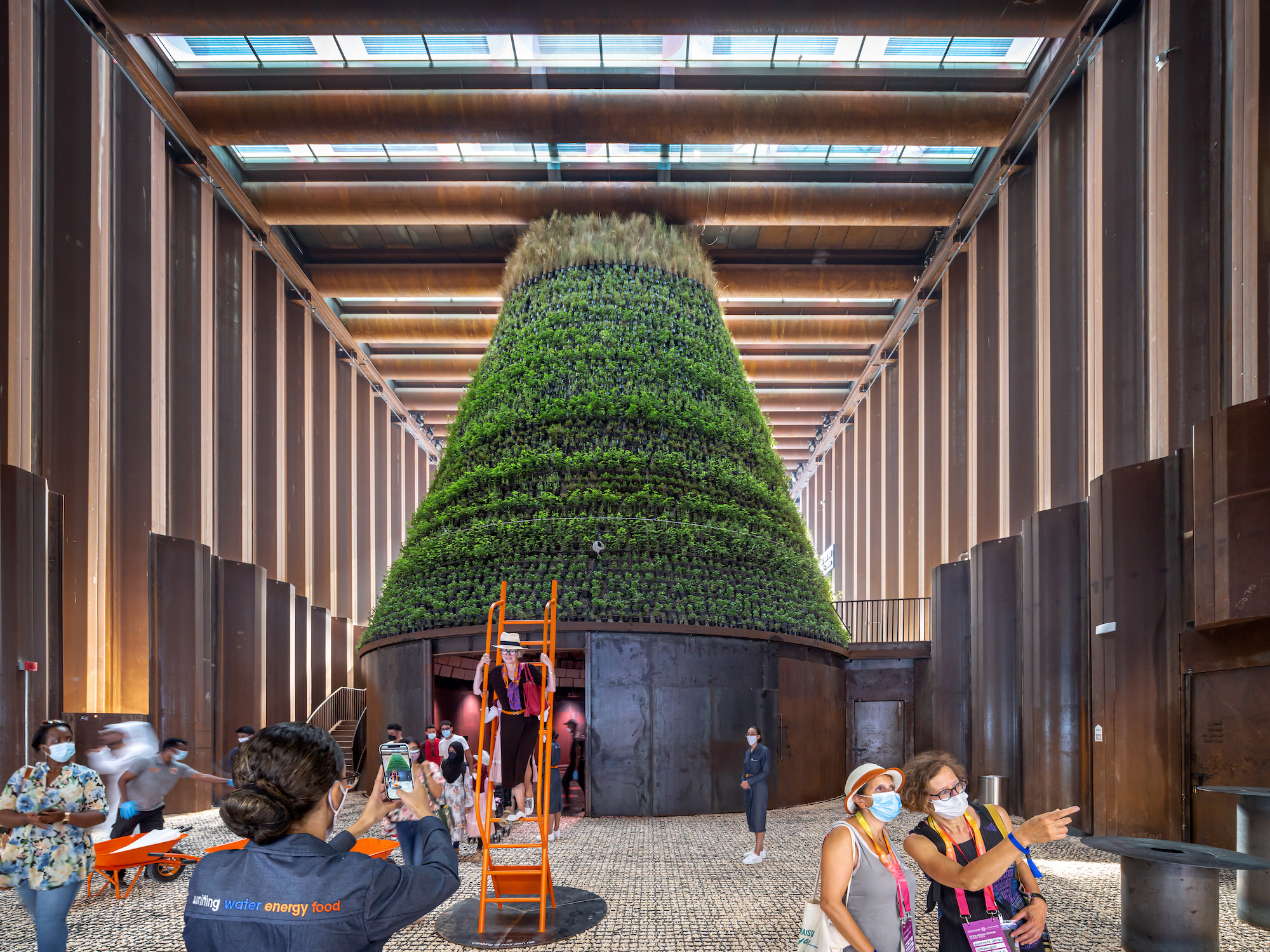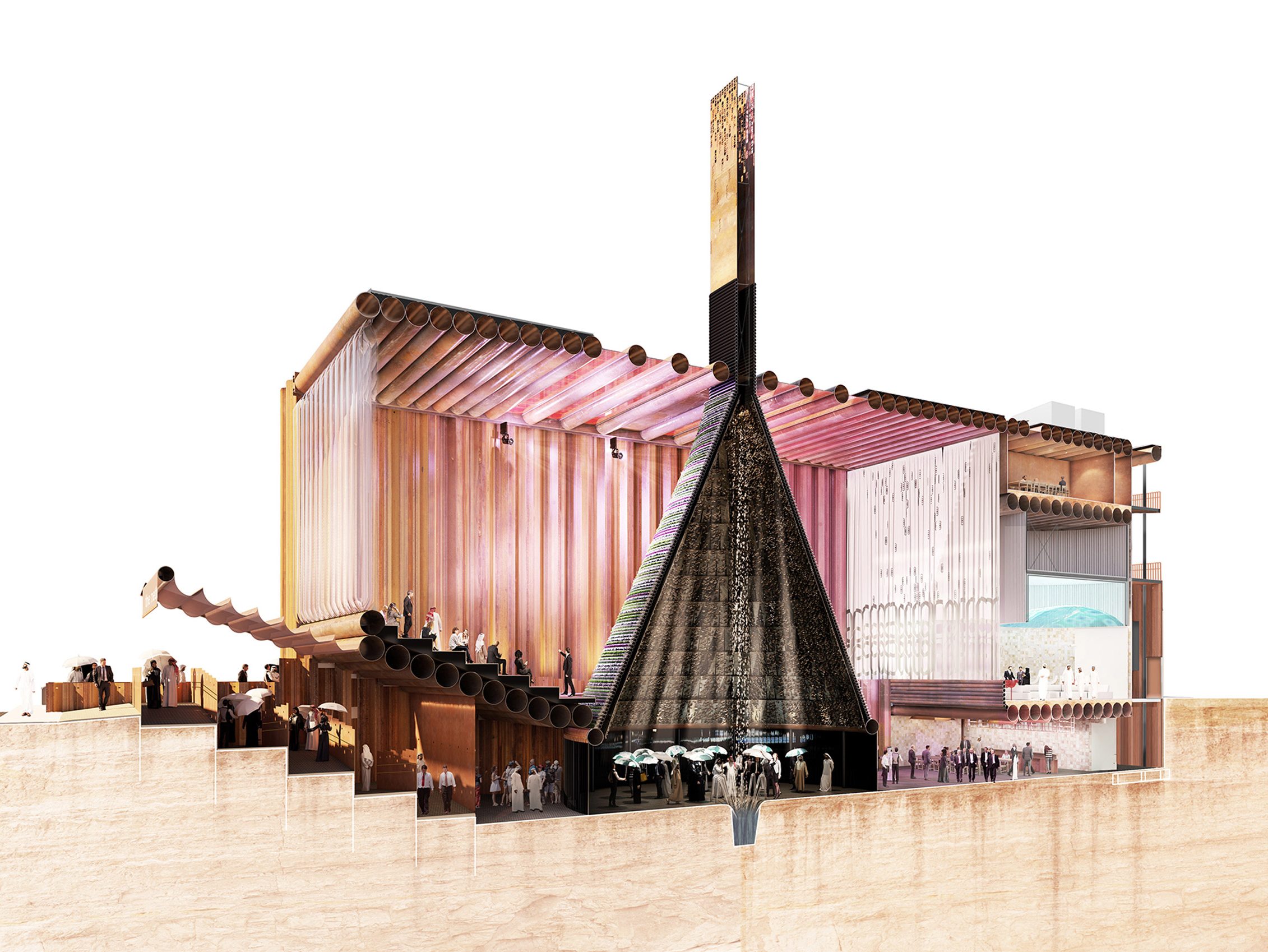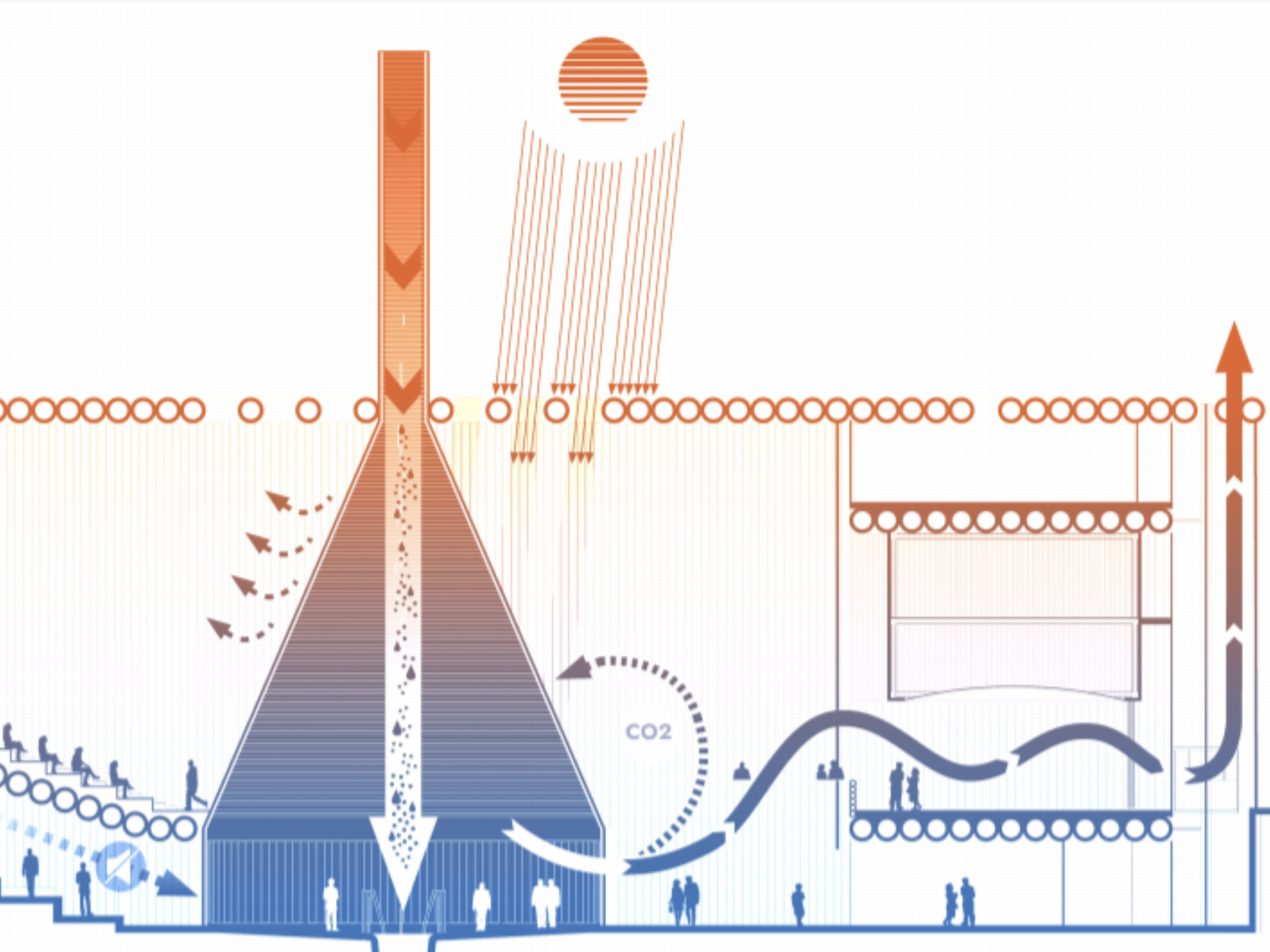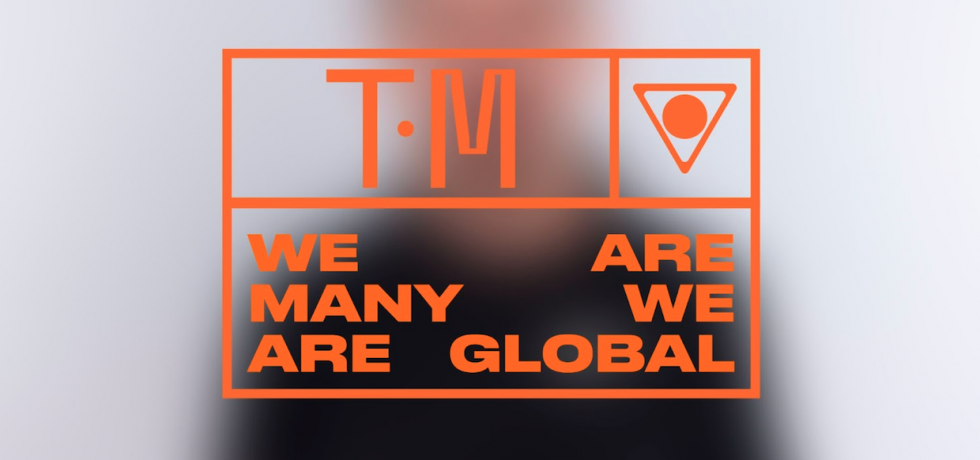Raining Stories
“It is not a building in the traditional sense, but a temporary circular climate system – a biotope – with an intense, sensory experience.”
—V8 Architects
How can we make it rain in the desert? The Netherlands Pavilion at Expo 2020 Dubai provided a life-sized showcase of experimental solutions to major issues of water scarcity, energy transition and food shortages. Only united water, energy, and food solutions can help the world achieve the UN’s Sustainable Development Goals, but together they can sustainably fuel any environment – even the Emirati desert. But the Netherlands Pavilion did not just harvest water, energy and food – it harvested stories to deliver a call-to-action urging the world to change.
Expo 2020 was a World Expo hosted by Dubai, in the United Arab Emirates, from October 1 2021 to March 31 2022. (Originally scheduled for 20 October 2020 to 10 April 2021, it was postponed due to the COVID-19 pandemic.) The consortium that designed and realized the Netherlands Pavilion consisted of V8 Architects, Witteveen+Bos, Expomobilia and Kossmanndejong. The building, by V8, was not a conventional structure but a temporary circular climate system – a biotope. Kossmanndejong (KDJ) developed a multi-sensory narrative experience using simple yet effective visuals, sound, and smells to communicate across language barriers with visitors of all ages and backgrounds. Every day, the pavilion harvested 800 liters of water from the desert air to manufacture rain—which is why visitors to the pavilion were given umbrellas.
It’s Raining Stories
After an introduction to the pavilion’s central theme of {uniting water, energy and food” in the control room, the visitor journey in the central cone built to a climactic multimedia experience developed by KDJ with BIND film. A wondrous journey projected onto white umbrellas told about the technical innovations that transformed the harsh desert climate into a fertile ecosystem. The journey’s pinnacle was a miraculous rainfall that suddenly poured from 18 meters high. This “wow” moment communicated the story beyond cognition: Not only did visitors understand the story, but they felt and experienced it. Carefully orchestrated theatrical lighting and penetrating music combined to enhance the pavilion’s storytelling and its emotional resonance.
Dust to Dust
As if it were a mirage, the pavilion was designed to disappear from the desert when the Expo concluded. Located in the Expo’s Sustainability District, the pavilion was intended to be a temporary structure that left little-to-no trace once dismantled. The pavilion’s construction materials were reusable, recyclable or biodegradable. Builders leased local steel and would return it for use in future projects in the UAE. Factory workers wore clothes made of recycled denim and would reuse the material for future clothing.
Theatrical Factory
The pavilion was a biotope – a miniature world with its own cycle. The biotope’s regularly repeated mechanisms to harvest water, energy and food transformed the pavilion into a factory. KDJ worked alongside V8 Architects so that the pavilion’s architecture and visitor experience would be completely intertwined. The pavilion manifested itself as a factory throughout the visitor experience, from sounds and equipment to the way the hosts were dressed. Everything breathed the atmosphere of a fresh, future industry. There was a control room with monitors; there were orange carts and wheelbarrows to act as mobile umbrella stands. On the ramps, you could hear sounds of Dutch innovations, such as the ‘swoosh’ of windmill blades. Inside, puffs of mist from the evaporative cooling system evoked a steam engine. The hosts wore blue overalls made from recycled denim because they were the workers who helped keep this factory running. The pavilion is also a logistical machine. KDJ knew from their previous experience designing the Urbanian Pavilion for Expo Shanghai in 2010 that because there is so much to see at an Expo, visitors benefit from a compact and efficient experience. For this reason they chose a clear, linear visitor journey: In all the tumult, it is nice to be completely carried away by a wonderful experience.
A Sensory Experience
Visiting the biotope is an intense sensory experience. All along the way, visitors’ five senses will be spoiled for choice – though not all at once. Throughout the visitor journey, KDJ strategically emphasized certain senses in concert with the pavilion’s architecture. The pavilion contrasted with both the Expo environment and the desert: the cooling rain inside versus the scorching sun outside; a fertile environment inside versus the dry, dusty sand outside. As visitors descended into the pavilion down a ramp, sounds piqued their curiosity. The temperature gradually shifted from hot to cool as visitors move down the ramp into the pavilion interior. Under the central cone, visitors could smell oyster mushrooms and taste the plants that grow on the cone. When they exited the cone, visitors could see the biotope covered in plants for the first time. As they exited the pavilion, Birthe Leemeijer’s scent installation recreated the smell of Dutch soil. This sensory experience was designed to unlock visitors’ imaginations, encouraging them to speculate what a circular system can be and achieve.
